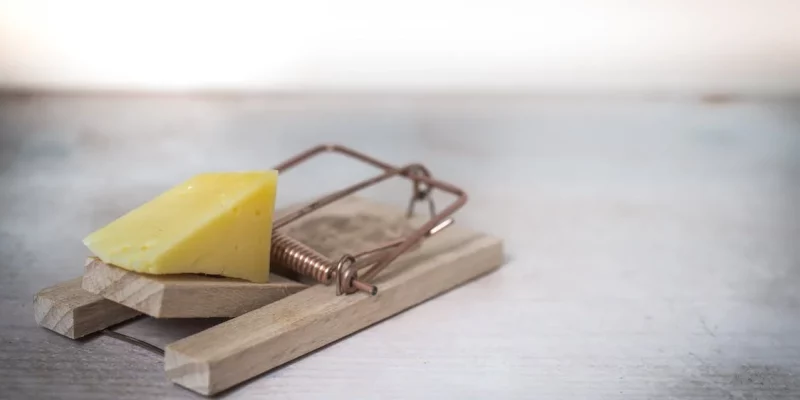Mouse traps are a common and effective solution for dealing with unwanted rodent guests. However, despite their simplicity, many people find themselves frustrated when their mouse traps fail to deliver the expected results. If you’re scratching your head wondering why your mouse trap isn’t working, consider these five possible reasons that might be hindering your success.
1. Too Much Bait
One common mistake that people make when setting up mouse traps is using too much bait. While it may seem counterintuitive, any reputable rodent exterminator will tell you that an overwhelming amount of bait can actually work against you. Mice are cautious creatures, and if they see an abundant source of food in the trap, they might be suspicious and avoid it altogether. Instead, use a small amount of bait, just enough to entice the mouse without triggering suspicion.
2. Wrong Trap
Choosing the wrong type of trap for your specific situation can significantly impact its effectiveness. Snap traps, electronic traps, glue traps, and live traps all serve different purposes. Snap traps are quick and efficient, but they require careful placement. Electronic traps are humane but need a power source. Glue traps are effective but might not be suitable for all situations. Assess your needs and select the appropriate trap for your unique circumstances.
3. Underestimating Mice Activity
Mice are intelligent and adaptable creatures. If you’re dealing with a persistent mouse problem, it’s crucial to recognize the extent of their activity. Mice are nocturnal and excellent at avoiding detection. Placing traps randomly or in areas where mice are unlikely to travel won’t yield the desired results. Take the time to identify common mouse paths, entry points, and nesting areas. By strategically placing traps along these routes, you increase the likelihood of catching the rodents.
4. Using Ineffective Bait
The success of a mouse trap heavily depends on the type of bait you use. Mice have a keen sense of smell and are attracted to strong, pungent odors. Peanut butter, chocolate, or even a small piece of bacon can be highly effective bait choices. On the other hand, using stale or unappetizing bait might cause the mice to lose interest in the trap. Periodically refresh the bait to ensure it remains enticing to the rodents.
5. Putting Traps in Open Spaces
While it might seem logical to place mouse traps in open spaces where you’ve seen mice running, this strategy can often backfire. Mice prefer to travel along walls and corners, feeling safer in these enclosed spaces. Placing traps in the middle of a room or away from walls is less likely to yield positive results. Instead, position traps along walls, near entry points, and in areas where you’ve noticed mouse droppings or signs of activity.
Final Thoughts
Effectively dealing with a mouse problem requires a combination of strategic planning and understanding the behavior of these elusive rodents. If your mouse trap isn’t working, take a closer look at your approach. Ensure you’re using the right type of trap, placing it in strategic locations, using enticing bait, and avoiding common pitfalls. By addressing these factors, you increase your chances of successfully ridding your home of unwanted mice and preventing future infestations.




















